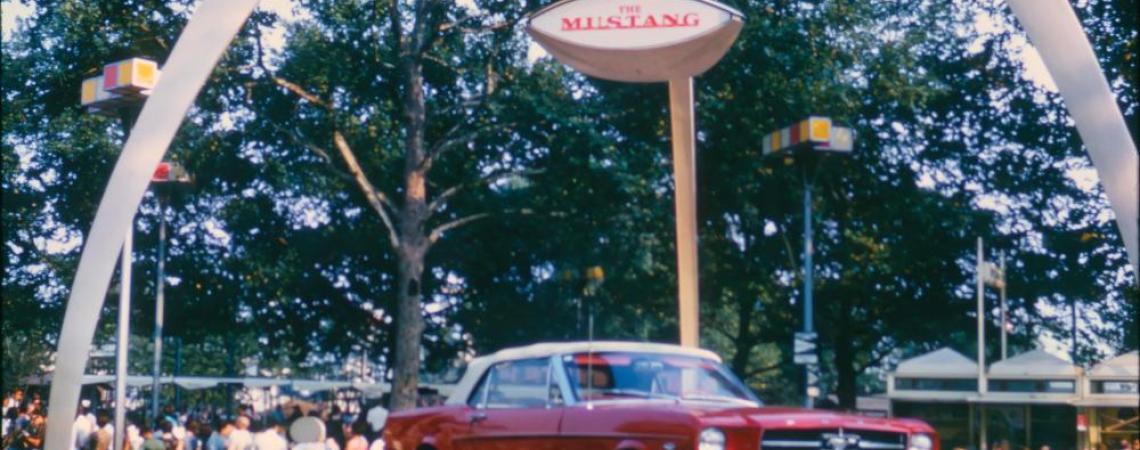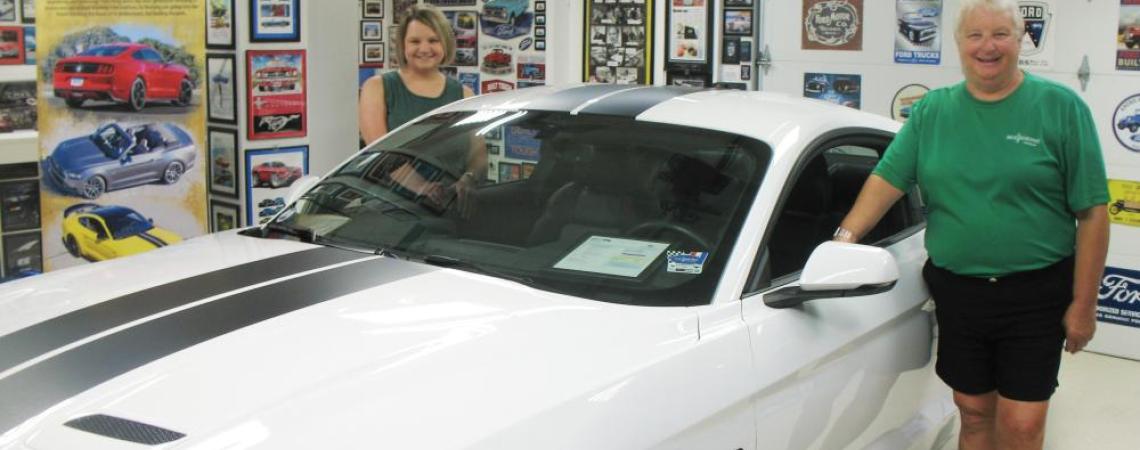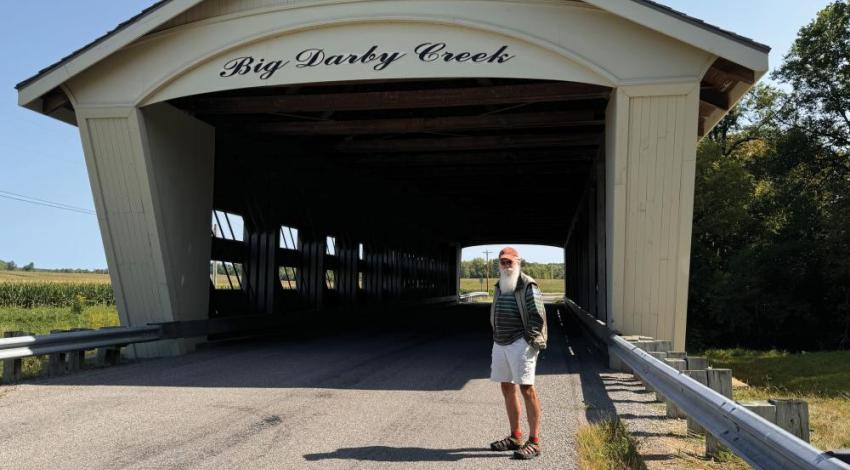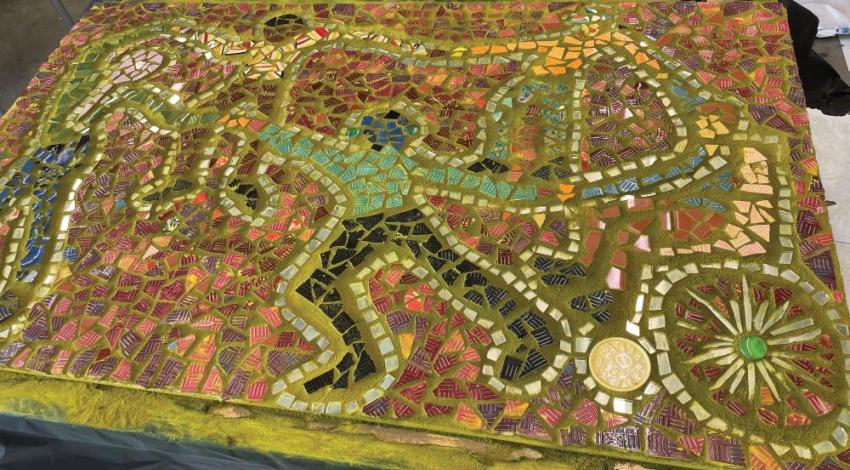Most people who casually drive past the (mostly) nondescript white barn along U.S. 40 in rural Miami County have no idea about the automotive history displayed inside.
Even the sign proclaiming the structure as the Halderman Museum Barn doesn’t give much of a clue to those who aren’t in the know (though the familiar-looking 6-foot-tall insignia of a galloping pony that adorns one side of the building is a hint).
For car enthusiasts from all over, however, it’s almost considered hallowed ground. The museum was created by and remains a lasting tribute to Gale Halderman, whose grease-pencil sketch he made as a low-level automotive designer eventually became the iconic Ford Mustang.
The Ford Mustang made its debut at the 1964 World’s Fair in New York City and was an immediate success.
In truth, Halderman never envisioned a full-blown museum on the family farm near Tipp City where he grew up, says Karen Koenig, Halderman’s daughter, who is now the curator. After he retired from the Ford Motor Company in 1994, he merely wanted to display some Mustang and other Ford memorabilia in his man cave at one end of the barn. He enjoyed greeting visitors there and sharing stories about his career designing cars until the day he died in 2020.
Halderman had spent much of his childhood filling all the paper he could find with sketches of vehicles of all sorts while his parents and grandparents ran the farm (and helped to educate neighbors about the new cooperative — now Pioneer Electric Cooperative — that had started bringing electricity to the area when he was 3). He went on to attend the Dayton Art Institute, and even before he graduated, talked his way onto the design team at Ford.
One day in the early 1960s, while working on the Galaxie project, executives ordered all the company’s designers to come up with concepts for a sleek and sporty yet affordable car that would appeal to younger drivers — male and female alike.
“Dad went home at 11 that night and sat down at the kitchen table with grease pencil and paper,” Koenig says. “He turned in his designs by 8 the next morning.”
One of Ford’s vice presidents at the time, Lee Iacocca, studied dozens of submissions before settling on Halderman’s design, which laid the foundation for the new model. Iacocca decided it would be dubbed “Mustang,” to be unveiled at the 1964 New York World’s Fair.
The Mustang’s success was immediate and unparalleled — more than 22,000 vehicles sold the first day they were available, and nearly a half-million the first year. It is the longest continuously produced Ford vehicle, with more than 10 million sold, and also now has an electric version, which was introduced in 2018.
Ford’s triumph propelled Halderman to a string of accomplishments in the cutthroat world of auto design, and his career with the company lasted 40 years.
As he spent more and more time in the man cave with his other retired friends, surrounded by automotive history, the memorabilia collection grew, and, Koenig says, her father’s displays quickly spilled into other parts of the barn.
“Dad retired in 1994 and dedicated his remaining years to preserving the Mustang legacy and his role in its creation,” Koenig says. In 2014, the family decided to officially open the space as a museum. “The documentary A Faster Horse was released when the model was turning 50 years old and really sparked renewed interest in the Mustang,” Koenig says. She spent an entire winter organizing the displays.
Many of Halderman’s designs adorn the walls. In addition to all things Mustang, there are sketches of the Galaxie, the Lincoln Town Car, and Ford trucks, which he also worked on during his career. The displays also include vintage signs, posters, toys, and more than 1,500 diecast vehicles (car enthusiasts often donate unique bits to the museum, and the family is always on the lookout for new items to display). The walls are filled with photos of Ford executives with whom Halderman worked as well as those of fellow Mustang Hall of Fame honorees.
In addition, Halderman designated one room to house part of his daughter’s massive camera collection. Each of the 500-plus cameras is properly identified and dated.
The barn has undergone many changes over the years, including an addition at the back to accommodate car clubs and organizations. The grounds host numerous cruise-ins and special events, like the annual gathering held each June to commemorate Halderman’s birthday. His granddaughter, Lauren Koenig, coordinates museum events and activities.
“After his death in 2020, we decided to continue his legacy by keeping the museum open. It has changed in the five years since dad died,” Koenig says. “We have added more memorabilia, and I am certain he would approve.”
The Gale Halderman Barn Museum, 6476 U.S. 40, Tipp City. Hours are by appointment — request at www.haldermanmustang.com. There is no admission charge, but donations are accepted.













